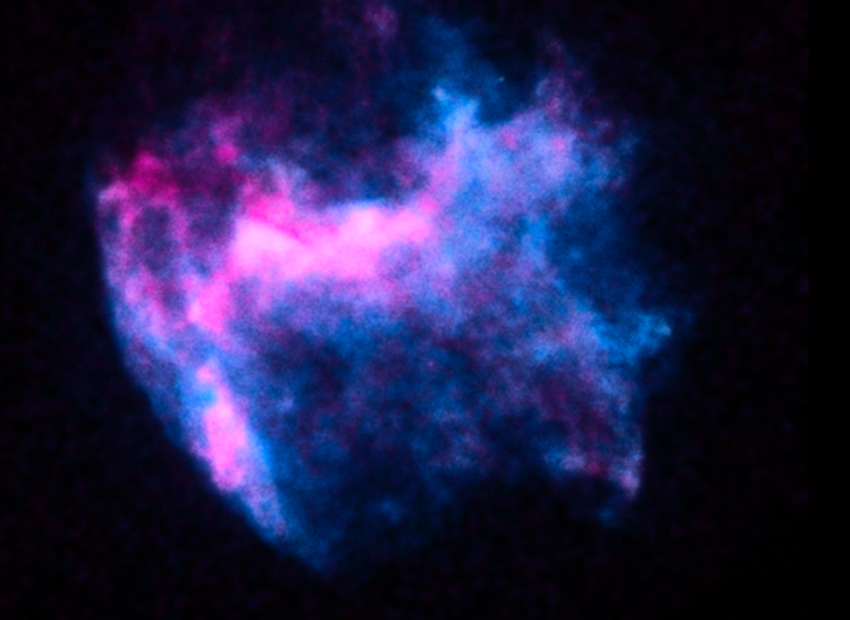
 Credit: NASA/CXC/MIT/L.Lopez et al.
Credit: NASA/CXC/MIT/L.Lopez et al.
Local Fireball
Fifty score years ago, or thereabouts, the thermonuclear furnace at the heart of a very massive star tested whether that star, or any star, so conceived and so created, could long endure. It could not. The ensuing explosion ripped through the Milky Way in a titanic fireball, leaving behind a strange, barrel-shaped remnant known as W49b, and not much else. Astronomers have searched in vain to see if a neutron star or pulsar was left behind as the cinder of the stellar core, as has been seen in other supernova remnants (most notably the Crab Nebula). In an X-ray image (shown above, obtained by the Chandra X-ray observatory) astronomers were able to measure the distribution of the nuclear material thrown out by the blast. Oddly enough, this material was spread out in a noticeably asymmetric way, with iron atoms (shown in purple in the above image) found in only half of the remnant, while lighter silicon atoms (shown in blue) were spread throughout. This strange distribution, and the barrel-shaped nature of the nebula, suggests that the exploding star was extremely massive, with a very strong stellar wind, enhanced along the rotational axis of the star. The explosion of such an object should have produced a bright burst of gamma-rays, and should have left behind a wrinkle in spacetime called a black hole. Astronomers have here dedicated themselves to the great task of unraveling the formation and eventual death of such stars, how they explode and pollute their environments in the unfinished work of cosmic chemical enrichment. With new observations, we highly resolve the remains of these honored dead stars, and help astronomers understand how the complex chemicals so created and so distributed give rise to new stellar generations, ensuring that systems of the stars, by the stars and for the stars shall not totally perish from the Galaxy.
Published: February 18, 2013
<
HEA Dictionary ● Archive
● Search HEAPOW
● Other Languages
● HEAPOW on Facebook
● Download all Images
● Education ● HEAD
>

Each week the HEASARC
brings you new, exciting and beautiful images from X-ray and Gamma ray
astronomy. Check back each week and be sure to check out the HEAPOW archive!
Page Author: Dr. Michael F. Corcoran
Last modified Monday, 26-Feb-2024 17:47:46 EST


